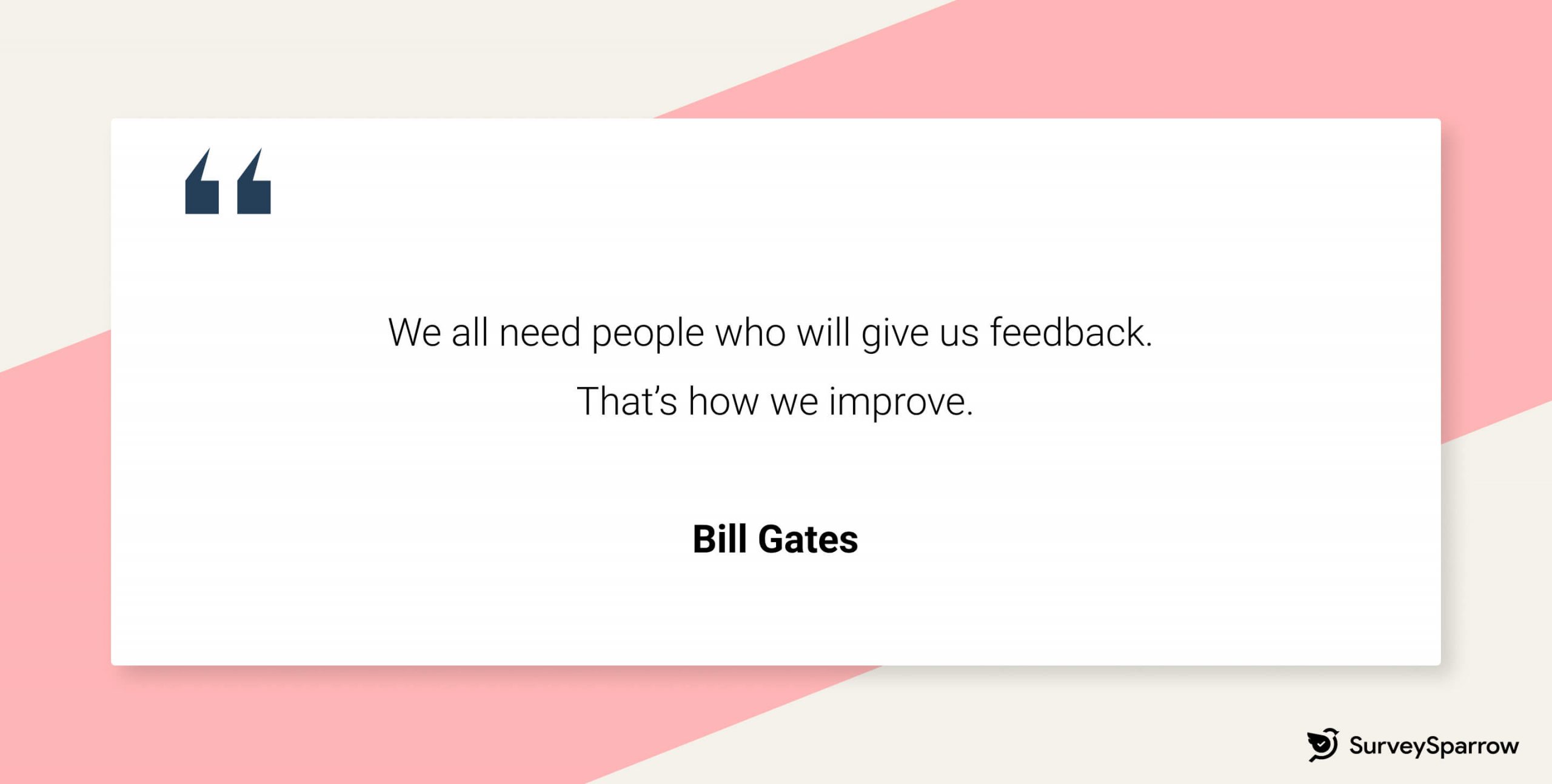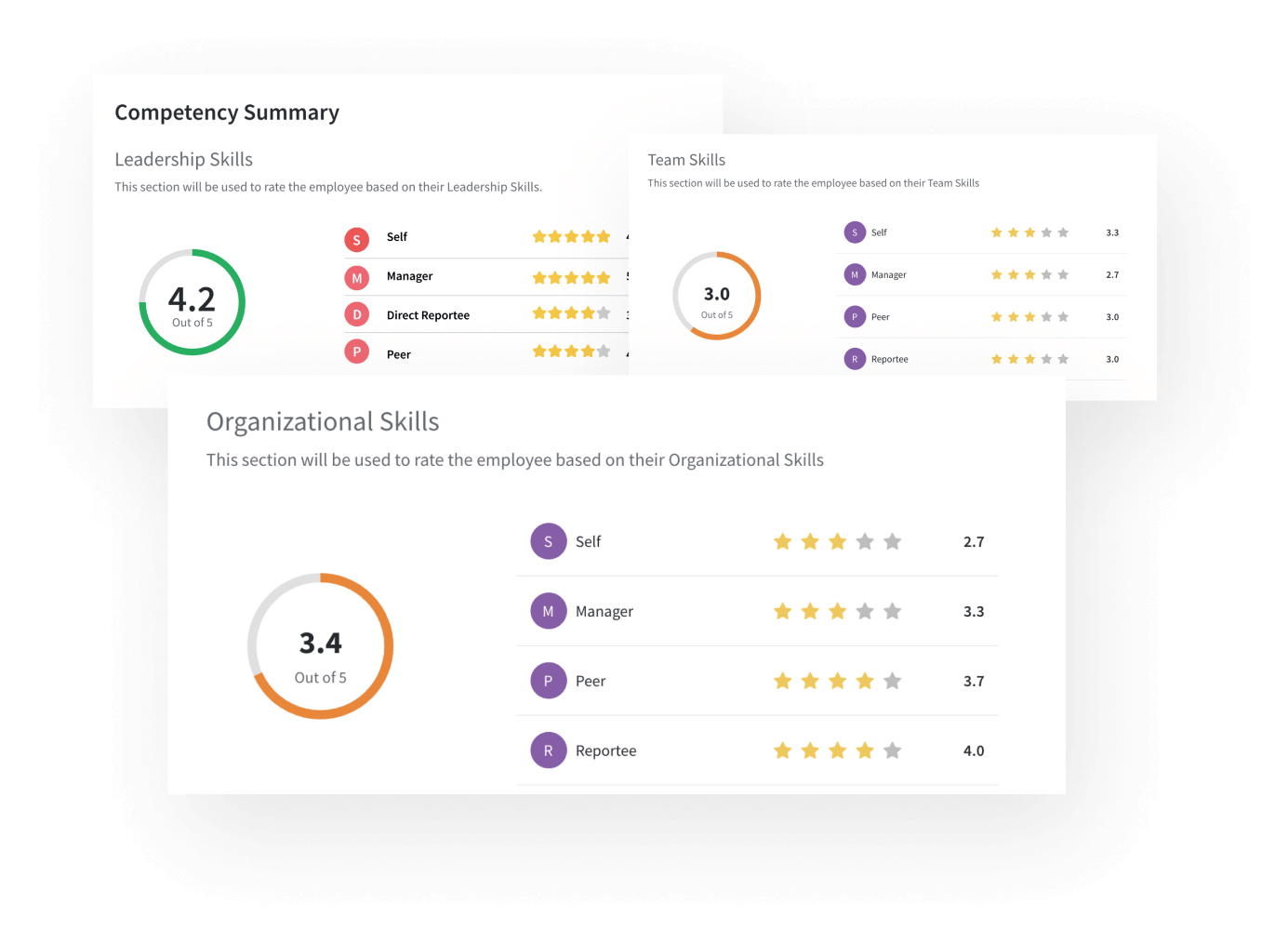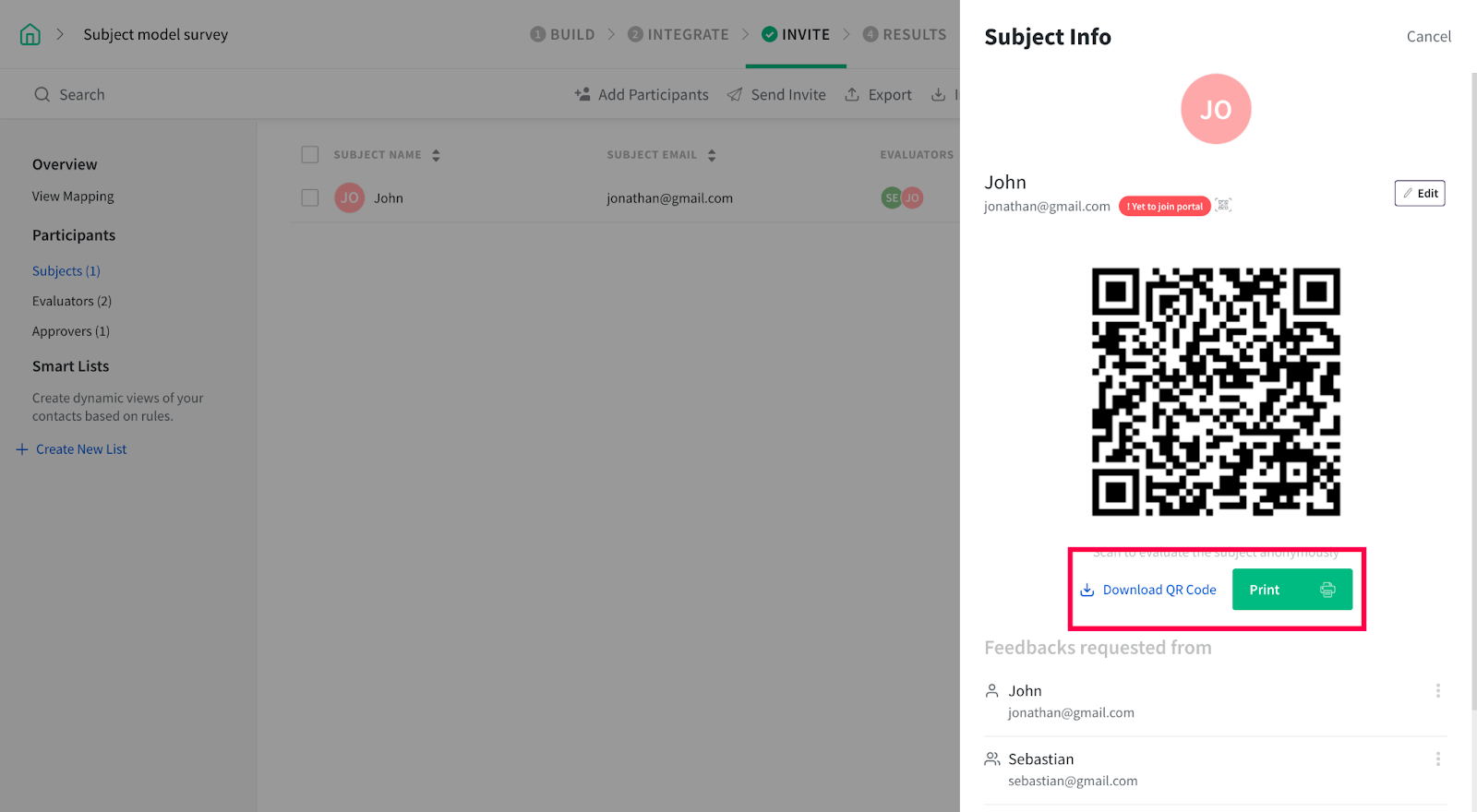Employee Experience
What Is 360 Degree Feedback? 10 Myths, Busted.
Article written by Kate William
Content Marketer at SurveySparrow
13 min read
19 September 2025

So, what is 360-degree feedback exactly? Well, it’s a way for people to get feedback on their performance from different perspectives, like their colleagues, bosses, and even the people they manage. But there are lots of misunderstandings about this method that can make it confusing.
In this blog post, we’ll tackle ten common myths about 360-degree feedback, and help you understand why it’s valuable for personal and professional growth. So, let’s get ready to separate fact from fiction.
- 360-Degree Feedback: Definition And Uses
- 10 Myths And Facts About 360 Degree Feedback
- The 6 Benefits of 360 Degree Feedback
What Is 360-Degree Feedback And Why Is It Used?
360 degree feedback, also known as multi-rater feedback, is an employee performance review in which co-workers, bosses, and subordinates rate your performance. The objective of a 360-degree feedback system is to find the strengths and weaknesses of employees.
360 degree feedback is usually used for mid-level and senior-level roles. This is because there are enough related employees to provide sufficient data for a detailed assessment.
360 degree feedback is helpful for creating a long-term roadmap for the employee’s future performance – including training and development.
SurveySparrow helps your HR teams schedule performance reviews, conduct multilingual assessments, and prioritize what employees should focus on next. Get started with our 360 feedback software for free.
Like most things, there are a lot of myths surrounding 360-degree feedback. Let us talk about 10 such myths that hold back companies from opting for a 360 feedback survey.
What Is 360-Degree Feedback: 10 Myths And Facts
Myth #1: 360 feedback helps only the management.
Fact: 360-degree feedback benefits everyone, not just the management.
Most employee performance reviews put an employee within the confines of a bell curve through which they are judged and rewarded. But a 360-degree feedback appraisal system gives you:
- A comprehensive rundown of the areas which needs to be improved
- Reasons behind a lag in performance
- The emotional quotient of the employee, decision-making ability, and much more
360-degree feedback provides valuable insights for the management to improve the prospects of a particular employee. Hence, 360 appraisals don’t just help the management. They help the employees by enabling them to grow together.

Myth #2: 360-degree feedback is to remove under-performers.
Fact: 360-degree feedback is not solely intended for removing under-performers. But it also aims to support growth and development.
One: a multi-rater feedback is not a method to resolve performance problems but to point them out. In fact, it is the team lead’s/manager’s responsibility to improve the performance of an employee. Secondly, unless it is a serious issue like embezzlement, harassment and the like, he/she should never use feedback to fire an employee.
It’s true that 360-degree feedback can highlight areas of improvement for individuals who may be struggling in certain aspects of their work. But its purpose extends far beyond simply singling out under-performers.
In fact, using negative feedback from other stakeholders to make a decision can result in resentment and anger. This leads to negative word-of-mouth which can affect recruitment. So use 360-degree feedback to course-correct the trajectory for an employee, not to punish them.
Myth #3: 360 feedback is a great way to assess new recruits.
Fact: 360 feedback may not be suitable for assessing new recruits due to limited exposure and familiarity.
Thought you could assess new hires with a 360 review? Nothing could be farther from truth.
360-degree feedback relies on input from various sources. For new recruits, who are still in the process of adapting to the work environment, building relationships, and understanding team dynamics, there isn’t enough data for an accurate assessment.
Assessing new recruits requires a more tailored approach; such as structured interviews, skill-based assessments, or probationary periods. So let there be at least a 6-month integration period before you employ this method on a new hire.
Myth #4: Interpreting the results is easy.
Fact: Interpreting 360 feedback results can be complex and requires careful analysis and understanding.
Contrary to popular belief, interpreting a 360 degree evaluation is not a straightforward or effortless process. You have to navigate through a wealth of information, understand diverse perspectives, and place the feedback within the employee’s unique circumstances.
For example, when asked for an opinion, people tend to exaggerate their skills and output. They imagine that they have a much bigger impact on their work and the work environment than others realize. Also, people are usually extremely optimistic about the future. These biases make it possible that people might give themselves a more positive self-appraisal than they deserve.
Research indicates that employee effectiveness is higher when their self-appraisal ratings align with their team’s ratings, while a significant mismatch suggests a hidden performance gap.
Personality further complicates result interpretation – as accepting and acting on feedback is influenced by individual traits. Studies reveal that when self-ratings and peer ratings are relatively consistent, it indicates a willingness to work on personal growth.
Myth #5: Employees like giving feedback.
Fact: Not all employees enjoy giving feedback, and various factors can influence their willingness to provide feedback.
There is a difference between casual opinion-sharing between peers, and the feedback process during appraisals. The former tends to be more honest because people are comfortable, and not concerned with quid pro quo. On the other hand, a 360 evaluation can be challenging or uncomfortable due to these factors:
- The fear of negative consequences or retaliation.
- The fear of misinterpretion, leading to strained relationships or career damage.
- A perceived lack of influence or impact. Employees may question whether their feedback will be heard, valued, and acted upon.
- The absence of a safe, supportive and open feedback culture.
Without proper training on 360-degree feedback, employees may initially hesitate to share their views due to these factors. The leadership team should make it a point to assure them about the confidentiality of the feedback process.
Once employees understand how to give unbiased feedback, they will be more willing to share candid opinions. They will also learn how to take criticism in their stride.

Myth #6: 360-degree feedback will ring in positive changes.
Fact: While 360-degree feedback has the potential to drive positive changes, its effectiveness depends on various factors. It does not guarantee immediate or universally positive outcomes.
Feedback is critical to personal improvement. But feedback alone will not bring about the required changes. Unless the management decides to help employees with the transition, and the employee accepts the help, there won’t be a result.
There are a lot of factors that contribute towards an employee making changes. Some of them are:
- Quality, relevance and credibility of the feedback itself
- Attitude towards the job, the company and their peers
- Self-motivation of the employee
- The values of the organization
- Lastly, sustained effort and follow-ups.
Myth #7: People will ask for a good rating from their peers.
Fact: While it’s a common myth, research suggests that people are more interested in receiving honest and constructive feedback rather than asking for inflated ratings from their peers.
There is unfortunately a belief that the employees will ask their friends for a good rating. And in turn, they will return the favor!
However, individuals typically seek meaningful feedback that can help them identify blind spots, discover opportunities for growth, and enhance their performance. Genuine feedback, even if it includes areas of improvement, is highly valued as it provides a realistic view of their abilities.
It is critical for companies to take this seriously and make sure that there are no biased reviews. As much as anonymity and confidentiality is important, getting the feedback right is the ultimate goal of the 360-degree feedback form. So make an effort to design the form in such a way that it includes as many different perspectives as possible.

Myth #8: 360-degree feedback will destroy relationships.
Fact: 360-degree feedback can create temporary tensions. But when implemented correctly, it can actually strengthen relationships and foster a culture of communication.
Studies have confirmed that employees prefer open feedback processes, and they strengthen the relationship between management and the employee. When there is feedback from multiple sources, the recipient is prone to take it as a positive step and not otherwise.
Furthermore, 360 reviews emphasize the importance of separating the person from their performance. It encourages individuals to focus on behavior, skills, and areas for improvement, rather than making personal attacks.
We’re all familiar with colleagues who are generous with critique but careful with praise. Getting feedback from various quarters is also a way to get thoughtful, positive reviews from these team members. When there is a balance between the positive and negative type of feedback, there is openness to improve. So 360-degree feedback does not create animosity. If anything, it forges stronger relationships.
Myth #9: A 360 review has no bias.
Fact: 360-degree reviews are susceptible to various biases that can affect the process and outcomes.
Unfortunately, there is one disadvantage when it comes to 360-degree feedback. While they aim to provide a well-rounded perspective, biases can still influence the feedback from different sources.
- One type of bias is the “halo effect,” where a positive impression of an individual in one area leads to a positive bias in other areas; or vice-versa with the “horn effect.”
- Another bias is the “recency effect,” where individuals tend to give more weight to recent events or behavior. This potentially overshadows earlier achievements.
- Moreover, there can be biases related to personal relationships. Individuals may provide feedback based on favoritism, preconceived notions, or personal conflicts.
It’s human nature to like some people more than others. Yet it’s also unfair when an employee who has been a terrific performer gets lower ratings than someone who happens to be in everyone’s good books. Organizations can minimize this with measures like rater training, anonymity and clear evaluation criteria for 360-degree feedback.

Myth #10: It identifies only the weaknesses of employees.
Fact: While 360-degree feedback can highlight areas for improvement, it also identifies and reinforces employees’ strengths.
The 360-degree feedback mechanism gathers input from multiple sources. This allows for a more well-rounded view of an employee’s capabilities.
As a result, it not only highlights areas where improvement is needed. But it also acknowledges and reinforces their positive contributions to the company.
Moreover, recognizing an individual’s strengths is vital for their personal and professional growth. By understanding their unique skills and abilities, employees can:
- Capitalize on their strengths.
- Further develop their expertise.
- Make meaningful contributions to their teams.
6 Benefits Of 360-Degree Feedback
- A balanced view: 360 degree feedback creates a well-rounded view of the employee’s skillset. It provides a fairly accurate picture of the employee’s behavior so far.
- Clarity on behaviour: The appraisal includes ratings from multiple people who work with the employee in various capacities. So the employee gets a specific view into how they interact with others. Participants discover behaviors and interactions that they may not have noticed before. Observing these overlooked patterns can help unlock a better work ethic.
- Self-awareness: The employees get a comprehensive personal report that reveals the perceptions of others, their skills, and the areas that need to improve. That goes a long way to improving self-awareness. It also gives them a roadmap of the actions and tasks to improve performance.
- Reciprocity: One of the biggest benefits of 360 review is that it’s a two-way street. An employee also gets the opportunity to assess the performance and behavior of his/her managers. This shows that the management cares about their own performance as well, and helps improve work relationships.
- Accountability: Senior players in a company are pivotal to the success of the organization. 360 degree feedback is the ideal appraisal method for them. It not only gives a holistic view of the leadership’s performance, it also helps increase accountability. The assessment highlights behaviors which lets the organization decide if the top executives demonstrated leadership.
- Dialogue: Since there is a wide range of feedback from different parties, the employees understand how their behavior and work directly impacts other people. Some areas might need clarification. For example, a co-worker might rate an employee high on teamwork while a manager might rate her lower. 360 degree feedback helps generate follow-up conversations that create greater understanding between employees.
Wrapping Up
A business earns respect and success when it consistently follows its guidelines. The same goes for an individual when they design a path to improve their chances at their work. Feedback, measurement and rectification is how you can slowly steer someone towards success.
This is where 360-degree feedback is helpful for an organization as it gets feedback from all the stakeholders involved. It helps to view everyone’s perspectives, discover the strengths and the weaknesses of employees, and help them become a strong pillar in the organization.

Get upto 40% more responses on your employee surveys. Start your free trial today!
Kate William
Related Articles

Employee Experience
Transform Employee Engagement with Accurate HR 360 Reviews
7 MINUTES
26 May 2023

Employee Experience
10 Best Virtual Team Building Activities for Remote Teams (Fun & Must-try Games)
12 MINUTES
26 June 2020

Employee Experience
HR Reporting and Analytics: Features, Key Strategies and Trends
12 MINUTES
2 May 2023

Employee Experience
Implementing an Organization Wide 360 Feedback Initiative
9 MINUTES
24 March 2021
